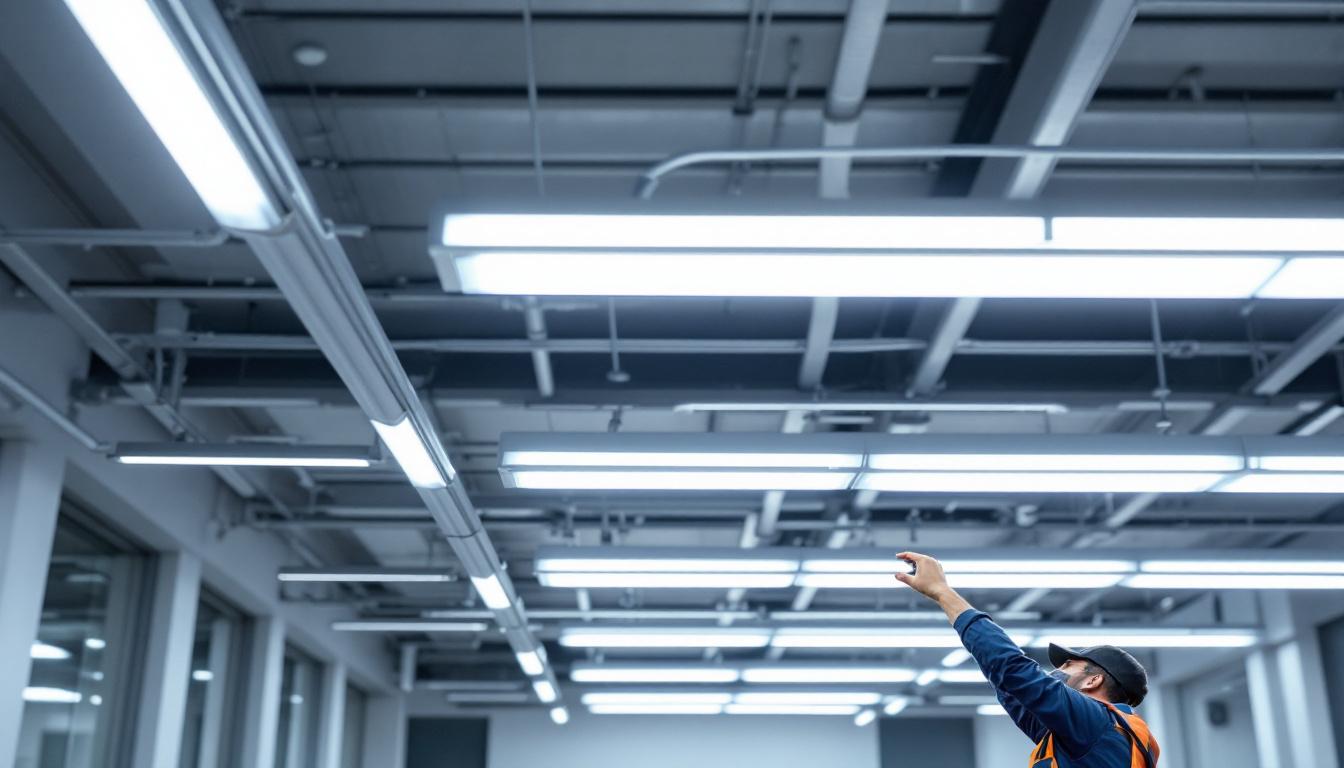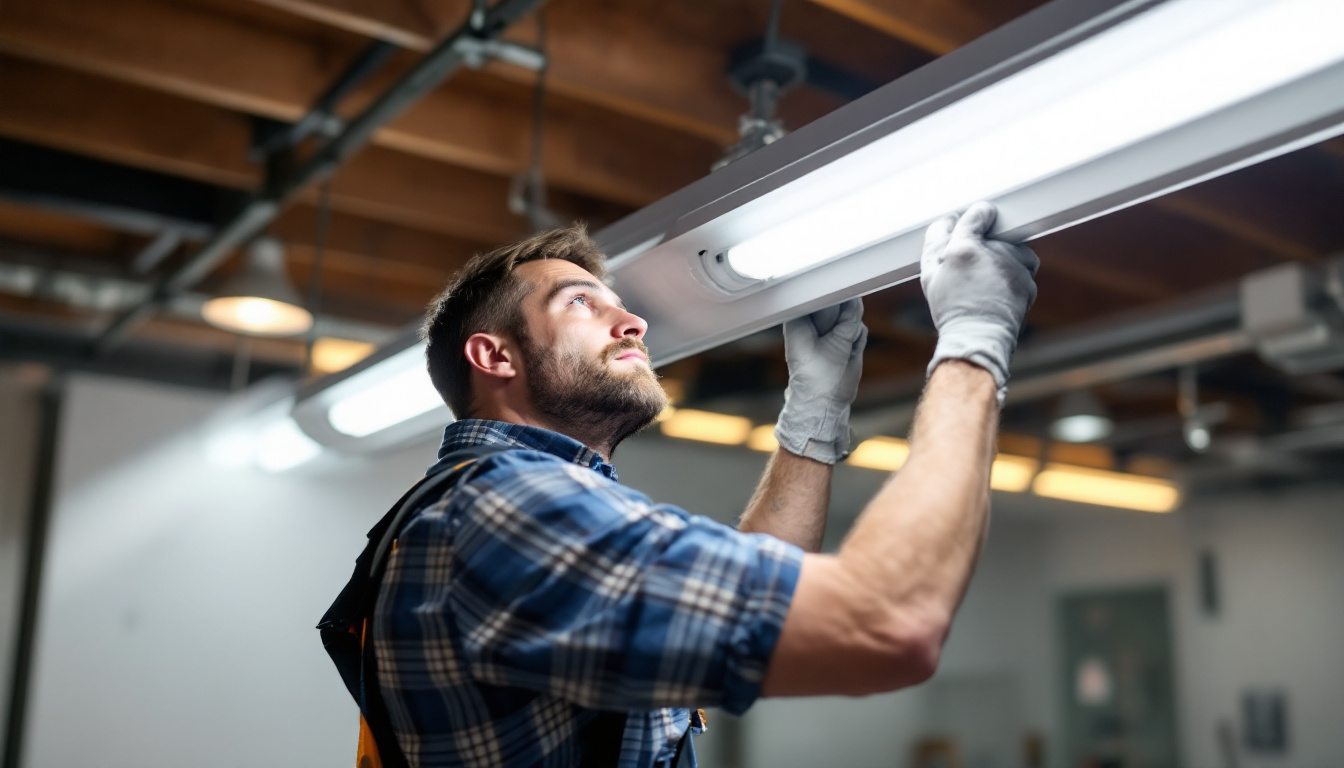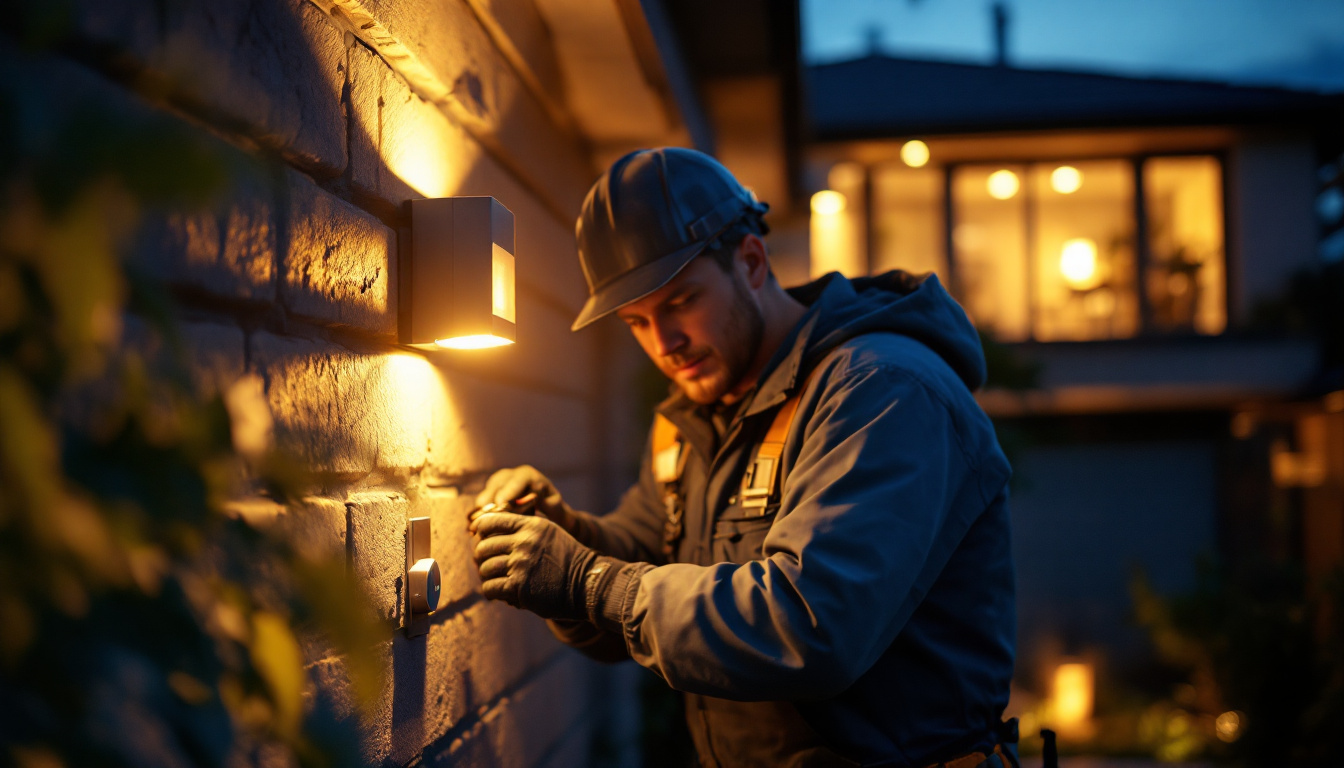
fluorescent ceiling lights: The Smart Lighting Contractor’s Approaches
Fluorescent ceiling lights have long been a staple in commercial and industrial settings, providing efficient and effective illumination. As the landscape of lighting technology evolves, contractors must adapt their approaches to meet the demands of modern projects. This article explores various strategies and considerations for lighting contractors working with fluorescent ceiling lights, focusing on installation, maintenance, and energy efficiency.
Before diving into specific approaches, it’s essential to grasp the fundamentals of fluorescent lighting technology. Fluorescent lights operate by passing an electric current through a gas, which produces ultraviolet light. This light then excites a phosphor coating inside the bulb, emitting visible light. This mechanism is what makes fluorescent lights more energy-efficient compared to traditional incandescent bulbs.
Fluorescent lights come in various forms, each suited for different applications. Common types include linear fluorescent tubes, compact fluorescent lamps (CFLs), and fluorescent downlights. Understanding the differences between these types is crucial for contractors to recommend the right solution for their clients’ needs.
Linear fluorescent tubes are often used in commercial spaces, providing broad illumination. CFLs, on the other hand, are more compact and suitable for residential or smaller spaces. Fluorescent downlights offer a sleek design, ideal for modern aesthetics while still delivering energy-efficient lighting.
In addition to these common types, there are also specialty fluorescent lights designed for specific applications. For instance, high-output fluorescent lamps are used in environments that require intense lighting, such as gymnasiums or warehouses. Meanwhile, colored fluorescent lights can be employed in creative settings, like art galleries or theaters, to enhance the ambiance and visual experience. Understanding these variations allows contractors to tailor their lighting solutions to meet the unique demands of each project.
Fluorescent ceiling lights offer numerous advantages that make them a popular choice among contractors. One of the most significant benefits is their energy efficiency. They consume less power than incandescent bulbs, resulting in lower energy bills for clients.
Additionally, fluorescent lights have a longer lifespan, reducing the frequency of replacements and maintenance. This longevity is particularly advantageous in commercial settings, where downtime can be costly. Furthermore, fluorescent lights provide bright, even illumination, enhancing visibility in work environments.
Another noteworthy benefit of fluorescent ceiling lights is their versatility in dimming capabilities. Many modern fluorescent fixtures can be integrated with dimming systems, allowing users to adjust the brightness according to their needs. This feature not only contributes to energy savings but also enhances the comfort and productivity of occupants. Moreover, fluorescent lights are available in various color temperatures, ranging from warm white to cool daylight, enabling users to create the desired atmosphere in any space. This adaptability makes fluorescent lighting an excellent choice for both functional and aesthetic applications.
proper installation is crucial for maximizing the performance and lifespan of fluorescent ceiling lights. Contractors should consider several factors during the installation process to ensure optimal results.
Before installation, a thorough assessment of the space is necessary. This includes evaluating the size of the area, the height of the ceiling, and the specific lighting needs of the occupants. For instance, a warehouse may require different lighting solutions compared to an office space.
Contractors should also consider the layout of the space. Properly positioning fixtures can help eliminate dark spots and ensure even light distribution. This may involve using a combination of different types of fluorescent lights to achieve the desired effect. Furthermore, understanding the activities that will take place in the space can guide the lighting strategy; areas designated for detailed work may benefit from brighter, more focused lighting, while spaces meant for relaxation could use softer, diffused light to create a calming atmosphere.
Selecting the appropriate fixtures is another critical aspect of installation. Contractors should consider factors such as the color temperature of the bulbs, which can significantly impact the ambiance of the space. Warmer tones may be suitable for cozy environments, while cooler tones are often preferred in workspaces to enhance focus and productivity.
Additionally, the fixture design should align with the aesthetic preferences of the client. Modern fixtures can blend seamlessly into contemporary designs, while traditional options may suit more classic settings. Beyond aesthetics, energy efficiency is also a key consideration; opting for fixtures that accommodate energy-efficient fluorescent bulbs not only reduces electricity costs but also contributes to sustainability efforts. Moreover, the choice of fixtures can influence maintenance requirements; some designs may be easier to clean and replace than others, which is an essential factor for high-ceiling installations or in environments with high dust accumulation.
Regular maintenance is essential for ensuring the longevity and efficiency of fluorescent ceiling lights. Contractors should educate clients on the importance of routine checks and provide guidance on how to perform basic maintenance tasks.
Contractors should recommend routine inspections to identify any potential issues before they escalate. This includes checking for flickering lights, dimming, or color shifts, which can indicate that a bulb is nearing the end of its lifespan.
During inspections, it’s also essential to clean the fixtures and bulbs. Dust and grime can accumulate over time, reducing light output and efficiency. Simple cleaning can significantly enhance the performance of fluorescent lights. Additionally, contractors may suggest using a soft, damp cloth or a specialized cleaning solution to avoid scratching the bulbs, which can lead to further issues down the line. Regularly scheduled inspections not only help maintain light quality but also foster a safer environment by ensuring that all lighting is functioning as intended.
Understanding when to replace bulbs and ballasts is crucial for maintaining optimal lighting conditions. Fluorescent bulbs typically last between 7,000 to 15,000 hours, depending on usage and quality. Contractors should advise clients on tracking usage to determine when replacements are necessary. It may also be beneficial to establish a replacement schedule based on the average lifespan of the bulbs used, which can help clients plan for costs and avoid unexpected outages.
Ballasts, which regulate the current to the bulbs, can also fail over time. Contractors should be prepared to replace ballasts as needed to ensure consistent performance and prevent flickering or buzzing sounds. Furthermore, educating clients on the different types of ballasts—such as magnetic and electronic—can empower them to make informed decisions regarding upgrades or replacements. Electronic ballasts, for instance, are often more energy-efficient and can provide a smoother light output, which may be a worthwhile investment in the long run.
As energy efficiency becomes a priority for many clients, contractors must be well-versed in the sustainable aspects of fluorescent lighting. Implementing energy-efficient practices not only benefits the environment but also enhances the contractor’s reputation as a responsible service provider. The shift towards sustainability is not just a trend; it reflects a growing awareness of the impact that energy consumption has on our planet. By prioritizing energy-efficient solutions, contractors can play a pivotal role in fostering a culture of sustainability within their communities.
Contractors should advocate for the use of energy-efficient fluorescent fixtures that comply with current energy standards. These fixtures are designed to consume less power while providing the same level of illumination, making them an excellent choice for environmentally conscious clients. Moreover, the longevity of these fixtures means that clients will not only save on energy bills but also reduce the frequency of replacements, which contributes to less waste in landfills.
Additionally, contractors can explore options for integrating fluorescent lights with smart technologies, enabling clients to control their lighting systems more efficiently. Smart controls can adjust brightness based on occupancy, further reducing energy consumption. This technology can also include scheduling features that allow lights to dim or turn off during non-peak hours, ensuring that energy is used only when necessary. As clients become more tech-savvy, offering these advanced solutions can set a contractor apart in a competitive market.
Daylight harvesting is another effective strategy for enhancing energy efficiency. This approach involves using natural light to supplement artificial lighting, reducing the overall energy demand. Contractors can install sensors that adjust fluorescent lights based on the amount of natural light available, creating a more sustainable lighting solution. By maximizing the use of daylight, not only do clients benefit from lower energy costs, but they also enjoy the psychological benefits associated with natural light, such as improved mood and productivity.
By promoting daylight harvesting, contractors can help clients save on energy costs while creating a more pleasant and productive environment. Furthermore, incorporating design elements such as skylights or strategically placed windows can enhance the effectiveness of daylight harvesting. These architectural features not only improve the aesthetic appeal of a space but also contribute to a holistic approach to energy efficiency, demonstrating to clients that sustainability can be seamlessly integrated into their design choices.
Staying updated on the latest trends in fluorescent lighting can give contractors a competitive edge. Understanding emerging technologies and design preferences allows contractors to offer innovative solutions that meet client demands.
The rise of smart lighting solutions is transforming the way fluorescent lights are utilized in various settings. Smart technology allows for remote control, scheduling, and automation of lighting systems, providing convenience and flexibility for users.
Contractors should familiarize themselves with the latest smart lighting products compatible with fluorescent fixtures. By offering these solutions, contractors can address the growing demand for modern, tech-savvy lighting options.
As design trends evolve, so do the aesthetics of fluorescent lighting. Contractors should be aware of the shift towards more visually appealing fixtures that blend seamlessly with contemporary interiors. Sleek designs, integrated lighting systems, and customizable options are gaining popularity.
By offering stylish fluorescent lighting solutions, contractors can cater to clients seeking both functionality and aesthetics in their lighting choices.
Fluorescent ceiling lights remain a vital component of modern lighting solutions, particularly in commercial and industrial settings. For lighting contractors, understanding the intricacies of fluorescent technology, installation strategies, maintenance practices, and energy efficiency is crucial for delivering exceptional service.
By staying informed about trends and advancements in the industry, contractors can position themselves as knowledgeable experts, providing clients with innovative and sustainable lighting solutions. Embracing these approaches not only enhances the contractor’s reputation but also contributes to a more energy-efficient and aesthetically pleasing environment for clients.
Ready to elevate your lighting projects with the efficiency and sophistication of fluorescent ceiling lights? At LumenWholesale, we’re committed to equipping you with the highest quality, spec-grade lighting products at prices that respect your budget. Say goodbye to local distributor markups and hello to our extensive selection that meets rigorous industry standards. With free shipping on bulk orders, you can trust that you’re getting premium lighting solutions at the best value — no hidden fees, no compromises. Enhance your service offerings and delight your clients with the perfect blend of quality, affordability, and convenience. Take the next step and explore our Wholesale Lighting at the Best Value today.

Discover the essentials of dusk to dawn lights with our comprehensive guide tailored for lighting contractors.

Discover essential tips and common pitfalls for lighting contractors working with 4 ft fluorescent light fixtures.

Discover the essential guide for lighting contractors on LED motion lights.

Discover essential tips and insights for lighting contractors on integrating solar-powered wall-mounted lights into projects.